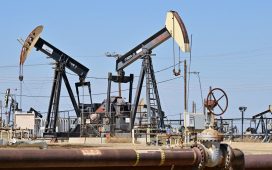Aerial view taken on May 20, 2024 shows the Olmeca oil refinery belonging to the company Petroleos Mexicanos (PEMEX), which along with six others is part of the National Refining System (SNR) located in Paraiso, Tabasco state, Mexico.
Yuri Cortez | Afp | Getty Images
The International Energy Agency said on Wednesday that a U.S.-led surge in global oil production is expected to outstrip demand growth between now and the end of the decade, pushing spare capacity to unprecedented levels and potentially upending OPEC+ market management.
The forecast prompted a stern warning for Big Oil from IEA Executive Director Fatih Birol, who suggested the world’s largest energy majors may wish to align their business strategies with the changes taking place.
In its latest medium-term market report, titled Oil 2024, the global energy watchdog said oil demand growth was on track to slow down before ultimately reaching its peak of near 106 million barrels per day by 2030. That’s up from just over 102 million barrels per day in 2023.
At the same time, the IEA expects total oil production capacity to surge to nearly 114 million barrels per day by 2030 — a whopping 8 million barrels per day above projected global demand.
The IEA said this would result in levels of spare capacity not seen before — other than at the height of the Covid-19 lockdowns in 2020.
It warned that these dynamics could have “significant consequences” for oil markets, including for the U.S. shale industry and producer economies in OPEC and beyond.
“As the pandemic rebound loses steam, clean energy transitions advance, and the structure of China’s economy shifts, growth in global oil demand is slowing down and set to reach its peak by 2030,” the IEA’s Birol said in a statement.
“This report’s projections, based on the latest data, show a major supply surplus emerging this decade, suggesting that oil companies may want to make sure their business strategies and plans are prepared for the changes taking place,” he added.
An oil pumpjack is shown near the Callon Petroleum vicinity on March 27, 2024 in Monahans, Texas.
Brandon Bell | Getty Images News | Getty Images
The report comes as countries seek to move away from fossil fuels, with momentum building behind clean and energy-saving technologies. The burning of fossil fuels such as coal, oil and gas is the chief driver of the climate crisis.
The share of fossil fuels in the global energy supply has stayed at around 80% for decades, according to the IEA, although it expects this to fall to around 73% by 2030.
Oil demand in advanced economies to fall further
Despite the projected slowdown in oil demand growth, the IEA noted that in the absence of stronger policy measures or behavioral changes, crude demand is still expected to be around 3.2 million barrels per day higher by 2030 than in 2023.
It said this growth is largely driven by robust demand from fast-growing economies in Asia, as well as the aviation and petrochemical sectors.
In advanced economies, however, the IEA says oil demand is on course to dip below 43 million barrels per day by 2030, down from close to 46 million barrels per day last year. Aside from the coronavirus pandemic, the IEA said the last time oil demand from advanced economies was that low was in 1991.
In a landmark 2021 report, the IEA had urged against new oil, gas or coal developments if the world is to achieve net zero by 2050.
The findings of that report were widely criticized by several OPEC+ producers, who advocate for dual investment in hydrocarbons and renewables, until green energy can unilaterally fulfill global consumption needs.
Led by Saudi Arabia, OPEC+ refers to an influential energy alliance composed of OPEC and non-OPEC partners.








